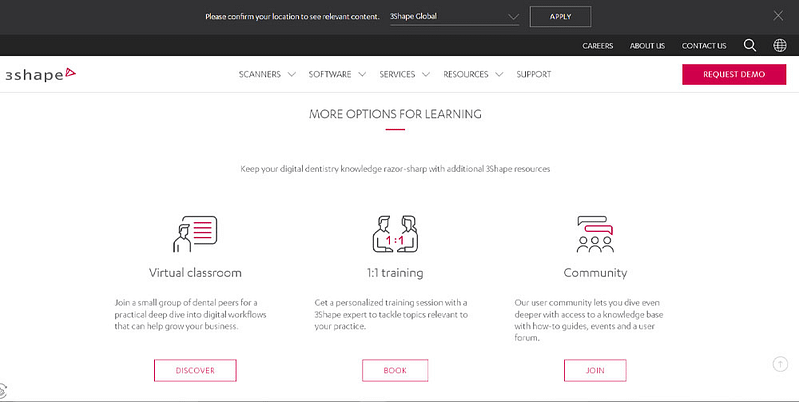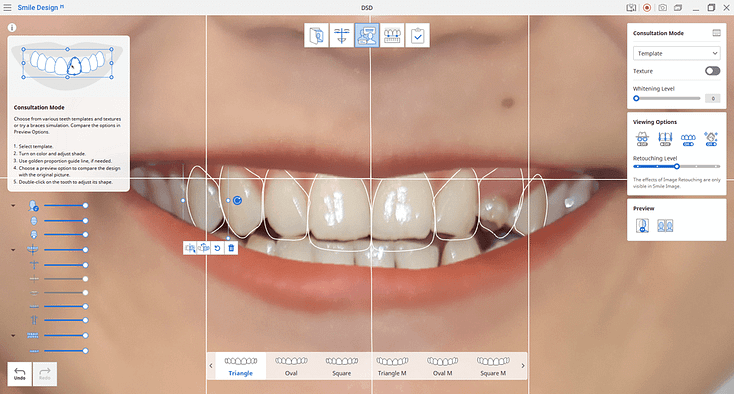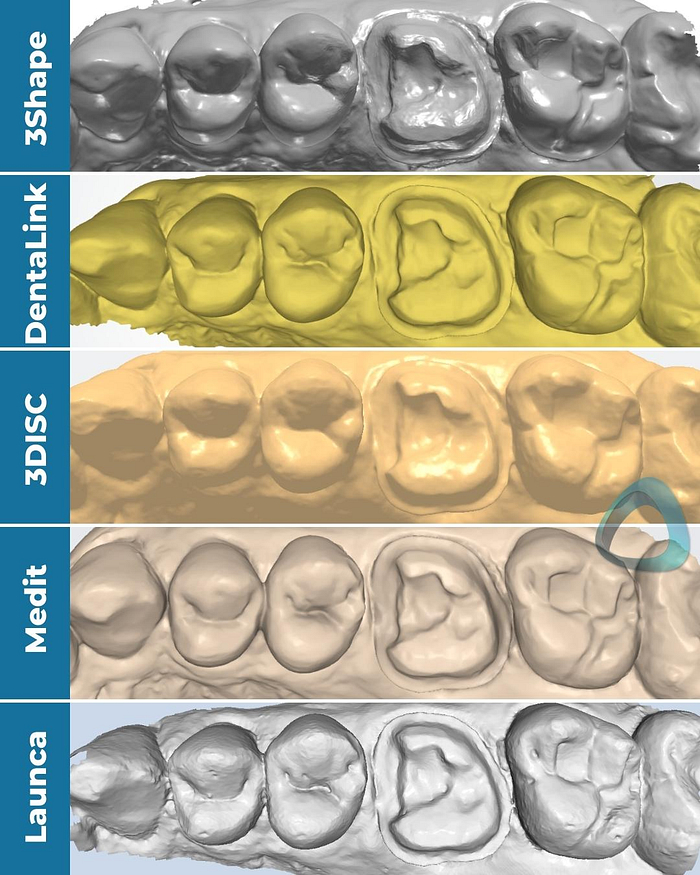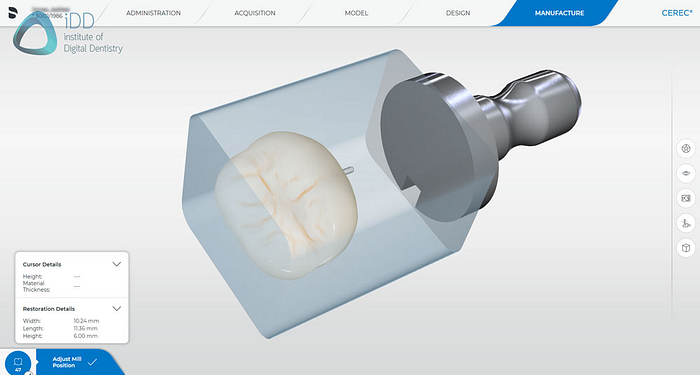Buying an intraoral scanner is one of the most important investments in your dental career. It used to be a tough to convince dentists to go digital, now it’s clear that digital is not only the future, but it is here and now. By not adopting digital dentistry you're offering your patients a substandard service.
The benefits of intraoral scanning are endless, for example:
- It’s a huge timesaver: instead of forcing your patient to sit still for 3-5 minutes and then sending impressions to the lab that have numerous errors you didn’t know about, you can now take digital impressions in under 45 seconds and ultimately have a higher hourly rate per day (if you know what you’re doing).
- Much more comfortable: you put a lot of effort into making your dentistry suave, impressive and elegant, however, this is completely undermined when you take out the messy gloop that feels disgusting in the patients mouth to take a physical impression.
- Exceptionally accurate: intraoral scans are extremely accurate and reduce the need for redos if you know what you are doing. This helps speed up your workflows, impresses your patience and eliminates needless stress in your life. Never forget, operator error is the number one reason for any issues.
But, there’s one thing working against you when trying to buy an intraoral scanner for your dental clinic.
The intraoral scanning market has a lot of players, and they all want your money. So, a lot of the information you find out there is incredibly biased.
Below are some things you need to consider when purchasing an intraoral scanner, but if you’re looking for unbiased reviews on nearly every intraoral scanner available, check out our scanner reviews.
They’re completely free, and you can even download the full pdf so you can print it out and make comparisons.
View our intraoral scanner reviews here.
Disclaimer: It’s worth noting that the pricing and availability of intraoral scanners is dependent on your location, as such, some of our reviews might contain different information than what you will see on your distributors website.
Support
How well you’re going to be supported AFTER buying your intraoral scanner is probably the single most important thing to consider.
Before purchasing, many companies will persuade you that they’re only a phone call away if something goes wrong.
However, when the time comes to actually support you, you’re greeted with an automated answering machine and your emails never get a response.
Support encompasses a few different areas. Such as:
- Training
- Support and troubleshooting
- Continued education + community forums
- Do they follow up after you’ve expressed the need for help?
- If they release new features, will they tell you about them or train you?
- Are they motivated to support you or simply see you as a walking dollar sign?
The truth is, there’s a lot of similarities between various brands of scanners. What really sets each company apart is how they look after the people that have purchased from them or how good their distributor network is.
If something goes wrong, you want to know that you can get in contact with someone who knows what they’re talking about - not just passed off to some sales rep.
For example, 3Shape has a great academy that offers a multitude of study materials, YouTube tutorials and training. Medit also have an academy and they are renowned for their customer support. The Institute of Digital Dentistry also offers a wide range of online training on different scanners as part of our affordable Membership.

An example of an online academy included with a scanner.
Cost
While support will help you separate the good from the bad, cost is probably going to be the one thing that dictates what scanner you’ll start researching.
The good news is that the price of scanners has decreased dramatically over the years. There used to only be a few scanners on the market, all retailing for around $50,000 to $60,000.
Nowadays, you can get some great quality scanners for as little as $12,000.
For example, Medit has some great low-cost intraoral scanners that are really high quality.
On the other hand, the Primescan is one of the most high-tech scanners available and the gold-standard for same day dentistry - however, it is priced as such.
You can find a great scanner to fit any budget, you just need to decide how much you can spend and what you want a scanner for.
What software comes with your scanner?
Depending on what you want to do with your scanner, seeing what additional software comes with it is really important.
Some scanners come with software that is just for scanning and exporting files. That’s it. Others come with a full suite of patient engagement tools such as orthodontic simulators, smile design etc. Lastly, some scanners are made for CAD/CAM and have full CAD software included for production in-house.
It is important to think about what you want a scanner for and ensuring you are getting the right software.
For example, 3Shape and Medit have some great apps such as Ortho Simulation, Smile Design and Model builders. CEREC has basically no ‘apps’ but has arguably the best chairside CAD software for crown and bridge work.
If you’re considering a scanner, it is crucial to consider what is important for you. Are patient engagement tools critical or do you just want an impression-replacement device?

The Medit Link App: Smile Design.
Image quality
Image quality is incredibly important when purchasing an intraoral scanner. If you buy one that has substandard image quality, it can make sending the scans to your lab an absolute nightmare.
Luckily, most companies are mostly open about their image quality, especially if you get in contact with a sales rep and ask about it so you can compare.
If you can’t find the image quality specifications you need, you can always look up photos of our scanner reviews online and see how the image quality compares amongst different companies.

A comparison of the same patient scanned with multiple scanners.
Open source or closed
Whether or not open source matters to you entirely on what you want to do with your scanner. Thankfully every single scanner on the market is now open sourced to some degree - meaning scans can be exported in STL format.
Open source
If you plan on simply scanning and then sending to your lab, you should check with your lab to see what file format they are comfortable with to make collaboration as easy as possible.
The most common file types to look for are:
- STL - monochrome
- OBJ - colour
- PLY - colour
STL is the file type most commonly exported. But many scanners these days can also export OBJ and PLY which are colour files, which might help with identifying margins of equi- or sub- gingival preparations.
If you’re going to buy a scanner definitely look into this and ensure your lab is comfortable using OBJ or PLY files..
Closed System
If you plan on sticking with one brand, like Dentsply Sirona, then arguably a 'closed' system is not a bad idea.
It’s similar to Apple in terms of philosophy. All your technology will work in conjunction with each other, which means everything is simplified and comes with an easy-to-follow workflow.
Having a connected ecosystem of software and hardware can make life easier for you, however it does limit flexibility in the future.
If you’re going to be venturing into CAD/CAM, in-office milling and other aspects of digital dentistry, when you start looking into milling machines you will come across closed systems.
For example CEREC Chairside does not enable any third party scanner to be used with its chairside software. In saying that, closed systems like CEREC can be beneficial as they work a lot more seamlessly and less piece-meal than combining multiple systems together.

Designing crowns with the CEREC Primescan's 5 click workflow.
What treatments do you want to offer?
While we’re big advocates for moving your workflow in-house and only referring really difficult things to your lab, the truth is a vast majority of dental clinicians are happy to just take scans and then send them off to the lab.
This is completely fine!
However, it’s important to be honest with yourself and look into your future.
If at some point, you’re going to want to explore how you can do more than just take scans and send them off, you need to get an intraoral scanner that’s going to allow you to do more.
Are you eventually going to start doing digital implantology? Is smile design something that you could use to improve case acceptance and patient communication? Will you decide that 3D printing is something that interests you?
Whatever you decide to do, it’s important to think about the future when you start looking for intraoral scanners that enable some form of CAD workflow, that way you don’t back yourself into a corner and only offer one treatment.
When venturing into CAD/CAM you will need a software such as that sold by CEREC, 3Shape or exocad. Some scanners have direct integrations to these software and some others don’t.
Size of the scanner
The size of your intraoral scanner is definitely something you want to be aware of. You’re going to be holding it quite a bit, so make sure that it’s comfortable!
You will also want to compare the weight of different scanners you’re considering.
Additionally, you might find that wireless scanners are more comfortable for you, in which case you might want to consider a wireless scanner such as TRIOS 4, TRIOS 3 wireless, CS 3800 or Medit i700. Check out our unboxing of the latest wireless intraoral scanner on the market - the Medit i700 Wireless.
Once again check out our scanner reviews as we compare the ergonomics and size of each scanner.
Company/distributor reputation
As is the case when buying anything, it’s important to look at reviews from other dentists to see if the company you’re purchasing from is reputable. We are talking about the distributor now.
Google reviews, talk to fellow dentists, ask around in forums.
You want to be purchasing from a company that is known to be reputable and helpful. Like we said prior, support is key!
It is also important to realise in some countries you can buy the scanner directly from the manufacturer (e.g buying directly from 3shape) while most of the time you will have to buy the scanner from a distributor.
On-going fees
While subscription fees are mostly on the out for the majority of the digital dentistry industry, it’s important to at least check if there will be any unexpected costs when purchasing your scanner.
This can be in the form of:
- Membership fees
- Annual fees /Subscription fees
- ‘Clubs’
- Fees for when you export files
- Ongoing equipment costs such as tips etc.
As mentioned, subscription fees are mostly on the way out in the digital dentistry industry… but there are still companies that insist of charging you yearly fees so keep a look out!
Ease of use
Your definition of ease of use comes down to what you’ve purchased your intraoral scanner for, and who’s going to be using it.
- Will you be teaching your clinical staff?
- Will you be collaborating with your lab?
- Are you a beginner in digital dentistry and need to learn the protocol?
All of these questions will dictate how important ease of use is. Some scanners are simply easier to use than others with many tutorials and sometimes an entire education platform you can access freely. It is important to consider how easy the scanner will be to use for you and your staff.
And thats our top ten list! Click the button below to see our scanner reviews and please leave your comments below 🙂


Your language and narration is very fluent and descriptive. I benefited a lot
Thank you for the comment Arif. I am glad you found it useful.